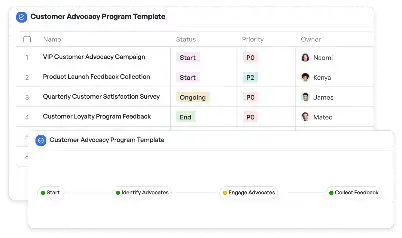Annotation Process Improvement Cycle
Achieve project success with the Annotation Process Improvement Cycle today!

What is Annotation Process Improvement Cycle?
The Annotation Process Improvement Cycle is a structured framework designed to optimize the annotation workflows essential for machine learning and artificial intelligence projects. This cycle ensures that data labeling tasks are performed with precision, consistency, and efficiency. In the context of AI, annotations are the backbone of training datasets, and their quality directly impacts the performance of models. The cycle includes stages such as data collection, guideline creation, tool setup, annotation execution, quality control, and feedback incorporation. For instance, in the autonomous vehicle industry, accurate image annotations are critical for object detection and navigation systems. By implementing this cycle, teams can streamline their processes, reduce errors, and ensure high-quality outputs tailored to specific project needs.
Try this template now
Who is this Annotation Process Improvement Cycle Template for?
This template is ideal for data scientists, machine learning engineers, project managers, and annotation teams working in industries like healthcare, automotive, and e-commerce. Typical roles include annotation specialists who label data, quality analysts who ensure the accuracy of annotations, and project leads who oversee the entire workflow. For example, a healthcare AI team working on medical image segmentation can use this template to manage their annotation tasks effectively. Similarly, an e-commerce company developing a recommendation system can rely on this cycle to label customer behavior data accurately. The template is versatile and caters to both small teams and large-scale enterprises aiming to enhance their annotation processes.

Try this template now
Why use this Annotation Process Improvement Cycle?
The Annotation Process Improvement Cycle addresses specific challenges in data annotation, such as inconsistent labeling, lack of clear guidelines, and inefficient workflows. For instance, in the field of natural language processing, inconsistent text annotations can lead to poor model performance. This template provides a clear structure, starting with the creation of comprehensive annotation guidelines to ensure uniformity. It also incorporates quality control mechanisms to identify and rectify errors early in the process. Additionally, the feedback incorporation stage allows teams to adapt and refine their workflows based on real-world results. By using this cycle, organizations can achieve higher accuracy, reduce rework, and accelerate project timelines, making it an indispensable tool for any data-driven initiative.

Try this template now
Get Started with the Annotation Process Improvement Cycle
Follow these simple steps to get started with Meegle templates:
1. Click 'Get this Free Template Now' to sign up for Meegle.
2. After signing up, you will be redirected to the Annotation Process Improvement Cycle. Click 'Use this Template' to create a version of this template in your workspace.
3. Customize the workflow and fields of the template to suit your specific needs.
4. Start using the template and experience the full potential of Meegle!
Try this template now
Free forever for teams up to 20!
The world’s #1 visualized project management tool
Powered by the next gen visual workflow engine




